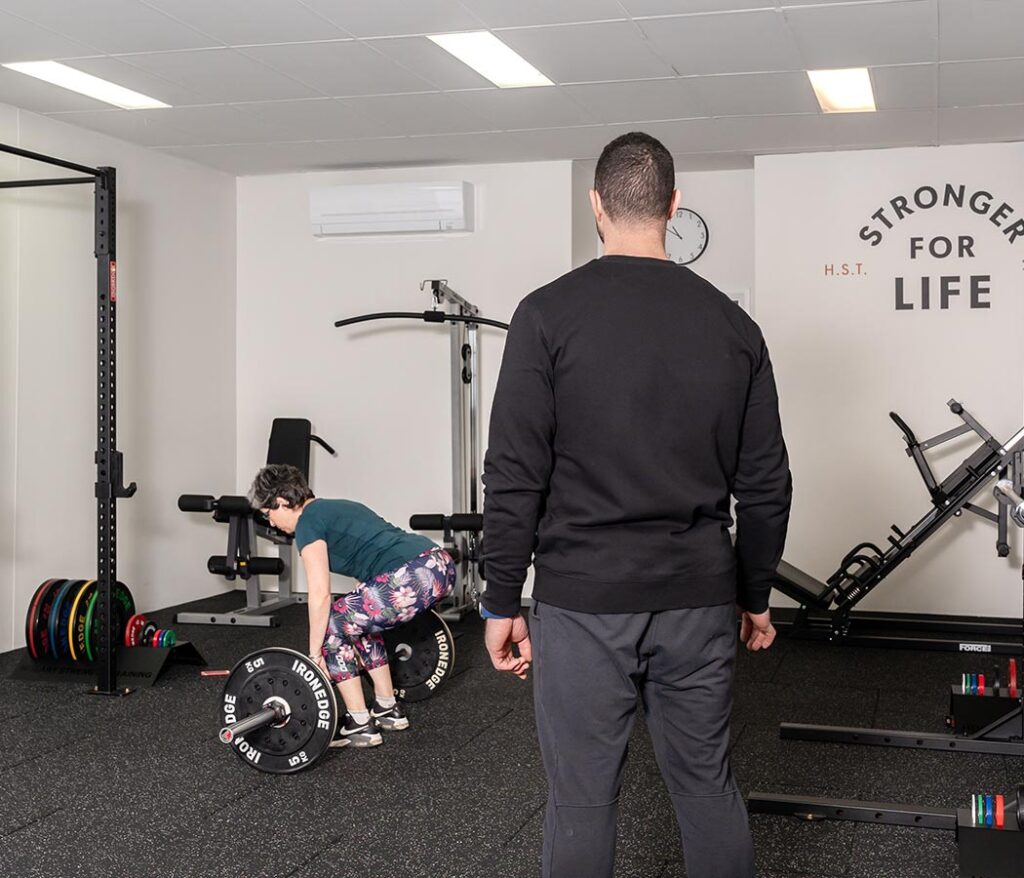The ability to move is made possible thanks to these little (or big things) called bones. Muscles attach to bones, which in turn connect at joints. Muscles pull on bones, causing them to rotate at the joint towards the line of pull. This combined functioning of muscles, bones and joints allows us to do all sorts of things. The adult skeleton is composed of about 206 bones, split into two divisions: The Axial and Appendicular Skeleton. The Axial Skeleton houses major organs and provides protection for these vital structures. Think the skull, ribcage, spine and sternum. The Appendicular Skeleton includes bones of the upper and lower limbs. The movement of these bones through muscles pulling at joints, allows for everything from reading a book to running a marathon! At Hobart Strength Training we recommend activity, impact and nutrition for bone density.
Activity and your bones
Increasing physical activity is a key factor in improving and maintaining bone health. The World Health Organisation recommends that adults participate in 75 – 300 minutes a week of moderate to vigorous Cardiovascular Exercise and Progressive Resistance Training 2 or more days a week, engaging all major muscle groups (1). Physical activity plays a critical role in bone health. Participating in physical activity will reduce the prevalence of Osteoporosis. This condition affects over 75 million people in Europe, Japan and the US alone. Osteoporosis is a bone disease where bones become weak and fragile due to low density and deterioration of bone tissue. It’s often not detected early because it doesn’t show symptoms until fractures happen.
As people age, bone density decreases, and the risk of fractures, which can lead to serious health issues, goes up. Osteoporosis is more common in women, partly because they have lower peak bone mass and hormonal changes after menopause. Estrogens help maintain bone mass, and as estrogen levels drop around age 50, bone loss can occur. With longer life expectancies, women now live more than a third of their lives after menopause, leading to more postmenopausal women overall (2). As bone is a “complex, living and dynamic tissue” it currently undergoes remodelling. Simply put, due to external pressures such as exercise, cells such as osteoclasts and osteoblasts, breakdown and remodel bones to become stronger and more resilient (3).
Impact and your bones
“High Impact” is often associated with being dangerous, but it doesn’t have to be. In fact, “high impact” training may be beneficial for bone health when gradually and intelligently introduced. In fact, one study from Leigey and colleagues (2009) studied 298 male and female older athletes with the average age of about 66 years old. A major finding was that athletes that participated in high-impact sports such as basketball, had greater bone mineral density. This continues to reaffirm that bones thrive on positive stressors and readily remodel to become more resilient when the right conditions are in place. The ability to tolerate these forces and the demands of high impact physical activity in general, connective tissue must be strong (4, 5). This is where Strength Training is critical. Developing strength through progressive loading helps prepare the body for the rigours of high-impact activity. If you’re not sure where to start with high impact training, a skipping rope, a game of some pick-up basketball or recreational tennis are all great starts!
Nutrition and bones
Physical activity is important, but diet also plays a crucial role. The Eat for Health Guidelines are generally sufficient for maintaining healthy bones, focusing on nutrients like calcium and protein (5). Calcium is vital, with most of it stored in bones acting like a bank. Other minerals alongside Calcium merge to create hard crystals which give structure. Calcium also supports heart and muscle contraction, blood and nerve health. Inadequate dietary intake can lead to the body taking calcium from bones, increasing the risk of osteoporosis. The Lancet Diabetes & Endocrinology suggests that human diets have adapted over generations to include calcium-rich foods like cow’s milk in high-income countries and milk from other mammals in parts of Asia, which can benefit bone health. Importantly, these dietary patterns also contain sufficient amounts of protein (6, 7).
Sufficient protein intake will ensure individuals, especially as they age will maintain muscle mass, provided they resistance train. Correcting any deficiencies in protein and calcium intake can improve bone outcomes and reduce fracture risk, especially in frail older individuals. We acknowledge there are a wide variety of dietary patterns however, if you feel you are at risk of having insufficient protein and calcium intake, it may be worth seeing a dietician.
Adapt for Success
The human body has the wonderful ability to adapt to stress when dosed carefully. Activity, including cardiovascular and resistance training, alongside exposure to high impact is critical for long term health. Longevity isn’t just about years lived but additionally, maintaining a high quality of life. If you’re looking to improve your strength, muscle mass and importantly, bone density, we’re here to help you. Get in contact with our team at Hobart Strength Training today.
References:
- Cover (10.5mm) (who.int)
- Schoenfeld, B. J., NSCA – National Strength & Conditioning Association, & Snarr, R. L. (Eds.). (2021). NSCA’s Essentials of Personal Training (illustrated ed.). Human Kinetics.
- Zatsiorsky, V. M., Kraemer, W. J., & Fry, A. C. (2020). Science and practice of strength training (3rd ed., p. 294). Human Kinetics Publishers.
- Participation in high-impact sports predicts bone mineral density in senior olympic athletes – PubMed (nih.gov)
- Australian dietary guidelines 1 – 5 | Eat For Health
- Calcium & Bone Health | Calcium Rich Foods (healthybonesaustralia.org.au)
- Sci-Hub | Nutritional intake and bone health. The Lancet Diabetes & Endocrinology, 9(9), 606–621 | 10.1016/s2213-8587(21)00119-4 (53yu.com)

